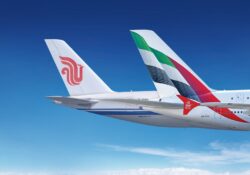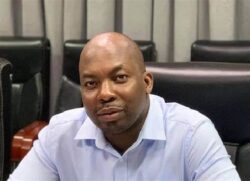By Kweku Attakora DWOMOH & Kelvin HANSEN
Africa has long grappled with the challenge of poverty, despite various efforts to alleviate it. In the year 2000, the continent’s poverty rate stood at 50 percent, impacting around 360 million people.
By 2019, this number had risen to 478 million people living in extreme poverty, with projections for 2021 suggesting an increase to 490 million—a figure exceeding the entire population of the United States.
While the COVID-19 pandemic has undoubtedly exacerbated this situation, poverty in Africa has been a persistent issue long before the pandemic. Extreme poverty, defined as living on less than US$1.9 per day, continues to be a major barrier to the continent’s development.
The economic statistics reveal a troubling trend for Africa. In the years leading up to the pandemic, some years witnessed negative growth rates as low as -10 percent with 2020, the height of the pandemic, nearing a decline of -20 percent.
Although the continent has since shown signs of recovery, it is yet to achieve a robust growth rate of 30 percent. Of particular concern is the low level of intra-African trade, which has not surpassed the US$100billion mark, a surprisingly low figure for a continent abundant in resources and comprising 55 countries.
In response to these challenges, the AU launched Agenda 2063, titled ‘The Africa We Want’, in 2013. This initiative aims to increase production, foster unity and enhance the continent’s wealth, with the African Continental Free Trade Agreement (AfCFTA) being its flagship programme.
The African Union (AU) initiated the African Continental Free Trade Agreement (AfCFTA) negotiations during its 25th Summit in Johannesburg, South Africa in June 2015. After three years of extensive discussions, 44 AU member-countries officially signed the AfCFTA on March 21, 2018. The agreement came into force following ratification by 24 member-states, with its operational phase launched in July 2019 at the 12th Extraordinary Session of the AU Assembly.
Trading under the AfCFTA officially commenced on January 1, 2021. The AfCFTA seeks to connect 1.3 billion people with a combined GDP of US$3.4trillion, aiming to boost intra-African trade volumes by 81 percent and total African exports by 35 percent. The goal is to create a single continental market that benefits all.
As of August 2024, 48 African countries have ratified the AfCFTA agreement. The AfCFTA offers numerous opportunities for Africa, including increased employment, women’s empowerment, a more competitive marketplace and enhanced African unity.
Africa has the youngest population in the world, with a median age of around 19 years compared to the global median age of about 30 years. As of 2023, over 60 percent of Africa’s population is under the age of 25, making it the continent with the highest concentration of young people.
The youth in Africa must take ownership of the AfCFTA, embrace it and actively work toward its success because they represent the continent’s future and have the energy, innovation and adaptability needed to drive transformative change. As the largest generation in Africa’s history, the young people are uniquely positioned to harness the opportunities presented by AfCFTA.
How can Africa’s youth fully leverage the opportunities under AfCFTA?
Knowledge as a foundation
The first step for young Africans is to acquire in-depth knowledge about AfCFTA. Understanding its structure, rules and the opportunities it offers is essential for success. Programmes like the AfCFTA Youth Inclusion Accelerator Project (AfCFTA-YIAP) are already in place to highlight how African youth, aged 18-35, can engage with the AfCFTA and take advantage of the opportunities it brings.
These initiatives aim to mobilise the demographic power, innovation and technological skills of the youth. There are also various resources available, such as the AfCFTA website and World Bank publications, to help young people educate themselves. Those who invest time in learning about AfCFTA will be well-positioned to reap significant rewards.
Self-development and job market readiness
One of AfCFTA’s primary objectives is to create more job opportunities for the African youth, breaking down the barriers of national borders. According to the Brookings Institution, AfCFTA could generate up to 16 million new jobs in the manufacturing sector alone.
Europe offers a clear example of the benefits of free trade agreements, with approximately 1.8 million workers in the EU and EFTA countries reported as residing in one-member state while working in another in 2022. For many unemployed youths and recent graduates, AfCFTA could offer similar opportunities.
However, with an expanding job market comes increased competition. Therefore, personal development, particularly in digital skills, entrepreneurship and leadership, is crucial. In today’s competitive environment, a university degree is often not enough; investing in personal growth is a must.
Embracing digitalisation
The digital revolution, spurred by the dot-com era and the COVID-19 pandemic, has made e-commerce an essential global business practice. However, Africa still lags behind. Online shopping engagement among Africans remain low, with only 30 percent of the population participating. This contrasts sharply with Asia, where regional business-to-consumer (B2C) e-commerce transactions amount to a substantial US$1,100billion, compared to a modest US$22 billion in Africa.
Similarly, digitally delivered services over the period in Africa have been valued at US$30billion, significantly lower than Asia’s US$790billion. With e-commerce being a major component of AfCFTA, African youth must fully embrace digitalisation to benefit. AfCFTA will, in essence, eliminate physical borders, opening new markets to youth-led businesses. Plans to implement digital payment platforms like the Pan-African Payment and Settlement System (PAPSS) are also in the works to boost the competitiveness of youth-led start-ups.
Networking and partnerships
Networking is a key driver of growth and opportunity. For young Africans, building connections is essential as it can open doors that would otherwise remain closed. Meeting new people can lead to valuable partnerships, mentorships and collaborations, providing access to markets across Africa and beyond. Engaging with like-minded individuals and experienced professionals will enhance the chances of success in the AfCFTA environment.
Access to finance
One of the major challenges for young entrepreneurs in Africa is securing financing for their businesses. Many rely on family donations, savings or high-interest loans from local banks. However, with AfCFTA, there will be more opportunities to attract investment. Increased market access and exposure will enhance the chances of finding the right investors to support youth-led ventures.
Empowering women
Research shows that approximately 70 percent of informal cross-border trade in Africa is managed by women. This demographic stands to benefit significantly from AfCFTA. The agreement is expected to increase wages, reduce the gender wage gap and create new career opportunities for women that did not previously exist.
Each member-state must take a pragmatic approach to empower its women through education, training and capacity-building to help women contribute to broader economic growth and social development across the continent.
In conclusion, the African Continental Free Trade Agreement presents a historic opportunity for Africa’s youth. By gaining knowledge, investing in self-development, embracing digitalisation, building networks, securing financing and empowering women, Africa’s youth can unlock the full potential of AfCFTA, driving the continent toward a more prosperous and united future.
>>>Kweku Attakora Dwomoh is an international trade lawyer and practitioner as well as a law lecturer with Ashesi University. Kelvin George Hansen is a financial consultant at Prudential Life Insurance Ghana. He also holds an undergraduate degree in Bsc. Computer Science and Executive MBA in Finance from the University of Ghana.










